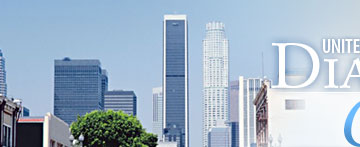Statement of Senator Dianne Feinstein
“In Memory of Lady Bird Johnson”
Entered into the Congressional Record
Thursday, July 12, 2007
Mr. President, I rise today to pay tribute to Lady Bird Johnson, one of our nation’s most beloved former First Ladies.
Lady Bird Johnson was a conservationist, an enthusiastic political wife, a shrewd businesswoman, and the loving grandmother of a close-knit family.
But she will be best remembered for her efforts to make America a more beautiful country.
Lady Bird Johnson was born Claudia Alta Taylor to her parents near Karnack, Texas in 1912. Legend has it that she received the quaint nickname when a nursemaid exclaimed that the young Claudia was “as purty as a lady bird.”
At a very early age, she expressed an interest in the environment, and in particular, wildflowers – which would become a lifelong passion.
A graduate of the University of Texas, Lady Bird received a bachelor of arts in history and a bachelor of journalism in 1934.
It was in Austin where she met her future husband, Lyndon Baines Johnson. The connection between the two was electric – after a whirlwind romance and courtship, the two were married in November 1934.
Lady Bird was a loyal and tireless supporter during her husband’s political career – usually behind the scenes – from Congressman to Senator, from Senate Majority Leader to Vice President, and finally, on that fateful day in 1963, as the 36th President of the United States.
And it is her accomplishments as First Lady that distinguished Lady Bird as visionary.
Lady Bird brought a dash of Texas hospitality and genteel charm to the White House during those first dark days of the Johnson Administration, as the nation struggled to recover from the tragedy of the Kennedy assassination.
A life-long lover of the environment, Lady Bird Johnson is best known for the Beautification Act of 1965, which is widely credited as the “Lady Bird Act.” The legislation encouraged efforts to make the nation’s Interstate system more scenic and limited billboards that could be posted along roadways.
So, as millions of American families go on summer vacations, they can thank Lady Bird Johnson for the beautiful wildflowers that bloom along the highways.
It was the first of a major legislative effort undertaken by a First Lady – and helped to transform the very nature of the Office of the First Lady.
Lady Bird began her beautification efforts with the “First Lady’s Committee for a More Beautiful Capital” in 1965.
Although it is largely known that the First Lady worked to have flower beds and dogwood trees planted throughout the Capitol, Lady Bird also worked to address more urban societal concerns here in the District of Columbia, such as crime, public transportation, mental health and recreation.
And to Lady Bird, beautification meant much more – it embodied a deep commitment to the conservation of this country’s natural resources.
In her own words, it meant: “clean water, clean air, clean roadsides, safe waste disposal and preservation of valued old landmarks, as well as great parks and wilderness areas.”
As First Lady, she was often considered a “shadow Secretary of the Interior.”
When the White House Conference on Natural Beauty was convened in May 1966, Lady Bird kicked off the conference proceedings by asking this important question: “Can a great democratic society generate the drive to plan, and having planned, execute projects of great natural beauty?”
And thanks in part to her efforts, the Johnson Administration helped to oversee some 150 legislative accomplishments for the environment, including:
- The Clean Air Act;
- The Wilderness Act of 1964;
- The Land and Water Conservation Fund;
- The Wild and Scenic Rivers Program; and
- Numerous additions to the National Park system.
Lady Bird Johnson helped to ensure protection of some of America’s finest natural treasures, including the Grand Canyon, the Hudson River Valley, and perhaps closest to my heart, the majestic California Redwoods.
Lady Bird Johnson was also closely involved in President Johnson’s civil rights efforts and his “Great Society” campaign, particularly on the Head Start program.
She helped to ensure that low-income youngsters are given the opportunities they need to compete fairly and equally when they enter elementary school.
So, she truly left her stamp as a First Lady.
After leaving the White House in 1969, Lady Bird turned her attention once again to wildflowers. She was instrumental in launching the National Wildflower Research Center in 1982, which was later renamed in her honor.
The Center has been central to helping preserve many species of wildflowers and plants, which are increasingly sensitive to the challenges of climate change. In fact, today, some 30 percent of the world’s wildflowers and other native flora are endangered.
Lady Bird Johnson was one of America’s finest citizens.
And she was recognized as such. In 1977, the former First Lady was presented with America’s highest civilian award, the Medal of Freedom, by President Gerald Ford. And in 1988, she received the Congressional Gold Medal from President Ronald Reagan.
As Laurance Rockefeller aptly stated when Lady Bird was awarded the Conservation Award for Lifetime Achievement in 1977: “She’s a role model for leadership responsibility for women. That’s a big part of her legacy, above and beyond the environment.”
Lady Bird Johnson will be very much missed. And I offer my personal and deepest sympathies to her family.
Thank you, I yield the Floor.
|







